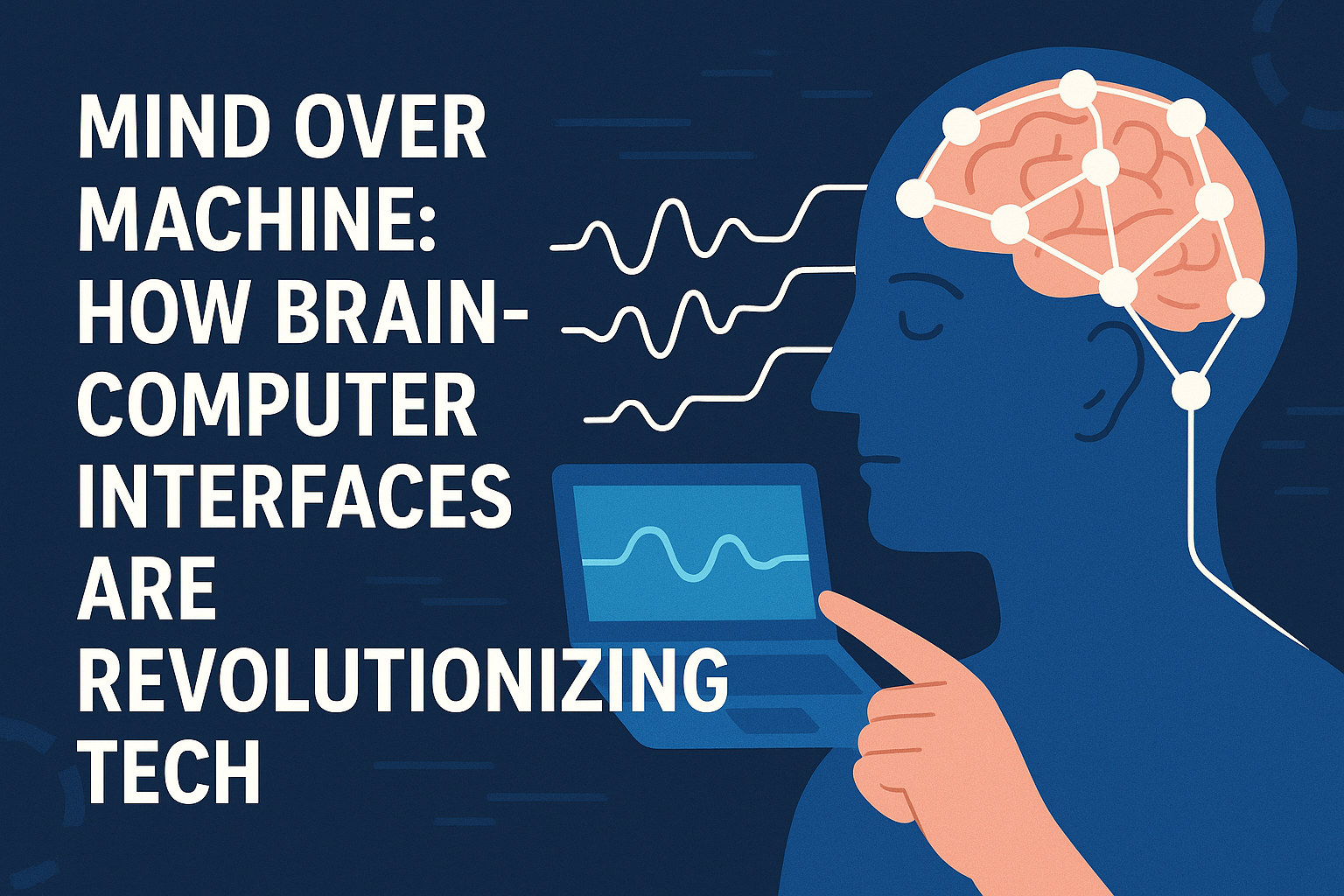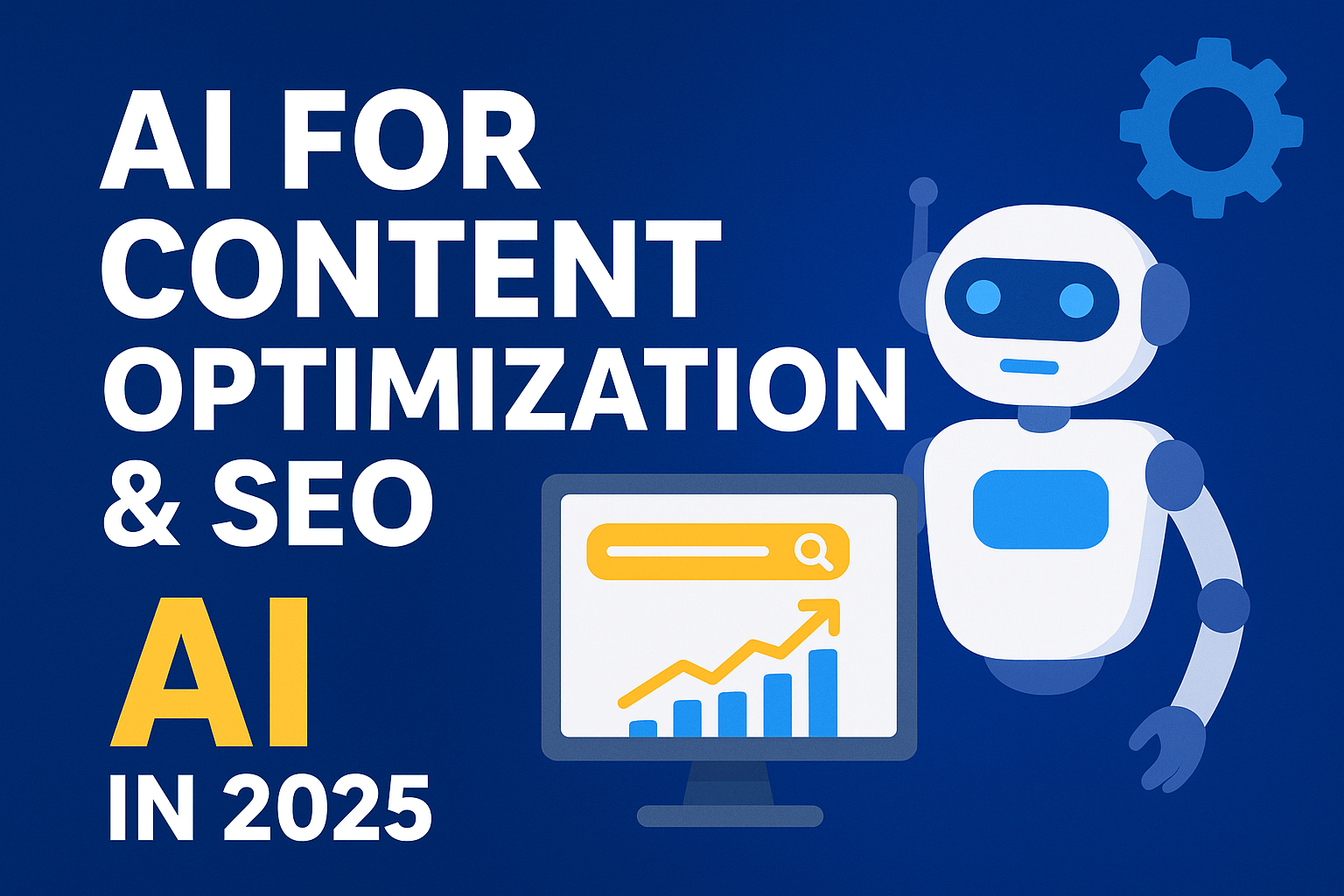The advent of brain-computer interfaces is transforming the way we interact with technology, enabling a new era of human augmentation and accessibility.
Neurotechnology has advanced to the point where individuals can control devices with their thoughts, revolutionizing the field of human-computer interaction.

This thought-controlled technology is not just a novelty; it’s a gateway to new possibilities in assistive technology and beyond, enhancing the lives of individuals worldwide.
Key Takeaways
- The development of brain-computer interfaces is revolutionizing human-computer interaction.
- Neurotechnology enables individuals to control devices with their thoughts.
- Brain-computer interfaces are enhancing accessibility and human augmentation.
- This technology has the potential to transform various industries.
- Thought-controlled technology is becoming increasingly prevalent.
The Evolution of Human-Computer Interaction
Human-computer interaction has evolved dramatically, from rudimentary keyboards to sophisticated neural command devices. This transformation is largely attributed to advancements in BCI technology, enabling a more seamless interface between humans and machines.
The journey of brain-machine interfaces began with Hans Berger’s pioneering discovery of the brain’s electrical activity and the development of electroencephalography (EEG). This foundational work laid the groundwork for subsequent innovations in the field.
From Keyboards to Neural Commands
The shift from traditional input methods like keyboards and mice to neural commands represents a significant paradigm shift in human-computer interaction. BCIs allow users to control devices with their thoughts, opening new possibilities for individuals with disabilities and enhancing overall user experience.
| Technology | Description | Impact |
|---|---|---|
| EEG | Electroencephalography measures electrical activity in the brain. | Enables the development of BCIs. |
| Neural Commands | Direct brain signals used to control devices. | Revolutionizes human-computer interaction. |
| BCI Technology | Advancements in interpreting brain signals. | Improves accuracy and speed of neural commands. |
The Paradigm Shift in Computing
The integration of BCI technology into computing signifies a profound change in how we interact with technology. By leveraging brain-machine interfaces, we can expect more intuitive and efficient interfaces, transforming the way we live and work.
As human-computer interaction continues to evolve, the potential applications of BCIs are vast, ranging from enhancing productivity to revolutionizing gaming and entertainment.
Understanding Brain-Computer Interfaces (BCIs) Thought-controlled Technology Neural Command Devices
Thought-controlled technology is becoming a reality with the development of Brain-Computer Interfaces (BCIs), changing how we engage with the digital world. BCIs enable a direct communication pathway between the brain and external devices, revolutionizing the way we interact with technology.
Defining the Brain-Machine Connection
The brain-machine connection is at the heart of BCI technology. It involves reading brain signals and translating them into commands that devices can understand. This connection is made possible through various techniques, including electroencephalography (EEG), which records electrical activity in the brain.
EEG-based control systems are a common application of BCIs, allowing users to control devices with their thoughts. For instance, EEG headsets can be used to control robots, computers, and even smart home devices.
Types of Brain-Computer Interfaces
BCIs can be categorized into three main types based on how they record brain signals: invasive, non-invasive, and semi-invasive.
| Type of BCI | Description | Examples |
|---|---|---|
| Invasive | Implanting electrodes directly into the brain | Neural implants, such as those used in deep brain stimulation |
| Non-Invasive | Using external electrodes to record brain activity | EEG headsets, functional near-infrared spectroscopy (fNIRS) |
| Semi-Invasive | Partially implanting electrodes under the scalp | Electrocorticography (ECoG) implants |
As Dr. John Smith, a leading neuroscientist, notes, “The development of BCIs is not just about enhancing technology; it’s about improving lives. For individuals with paralysis or motor disorders, BCIs offer a new level of independence.”
“The future of human-computer interaction is not just about faster processors or better screens; it’s about creating a seamless interface between the human brain and the digital world.”

Understanding the different types of BCIs and their applications is crucial for harnessing their potential. As research continues to advance, we can expect to see more sophisticated and user-friendly BCIs that enable hands-free control of IoT devices and beyond.
The Science Behind Neural Interfaces
Understanding the science behind neural interfaces requires delving into the intricacies of brain signal processing and machine learning. Neural interfaces, also known as brain-computer interfaces (BCIs), are systems that enable communication between the human brain and external devices.
Decoding Brain Signals
The first step in creating a neural interface is decoding brain signals. This involves capturing the electrical activity of the brain through various methods, including electroencephalography (EEG), magnetoencephalography (MEG), and electrocorticography (ECoG). EEG-based control systems are among the most common due to their non-invasive nature.
Once the brain signals are captured, they are processed using sophisticated algorithms to filter out noise and extract relevant features. This step is crucial for the accurate interpretation of brain activity.
EEG-Based Control Systems
EEG-based control systems utilize the electrical activity recorded from the scalp to control devices. These systems are popular in research and applications due to their non-invasive nature and relatively low cost. They have been used in various applications, from simple cursor control on a screen to complex robotic systems.
Signal Processing and Machine Learning
Signal processing plays a vital role in neural interfaces by enhancing the quality of the captured brain signals. Techniques such as filtering, amplification, and feature extraction are employed to prepare the signals for interpretation.
Machine learning algorithms are then used to classify and interpret the processed signals. These algorithms can learn to recognize patterns in brain activity associated with specific thoughts or intentions, enabling precise control over external devices.
By combining advanced signal processing techniques with machine learning, neural interfaces can achieve high levels of accuracy and reliability, paving the way for their use in a wide range of applications, from healthcare to consumer electronics.
How BCIs Translate Thoughts into Actions
The process of translating thoughts into actions through BCIs involves a complex series of steps and sophisticated algorithms. This intricate process enables individuals to control devices with their minds, revolutionizing human-computer interaction.
The Neural Signal Pathway
The neural signal pathway is crucial in BCIs, as it involves the acquisition of brain signals, processing them, and then translating these signals into specific commands. Brainwave communication is at the heart of this process, where neural activity is detected and interpreted.
“The neural signals captured by BCIs are like a complex code that needs to be deciphered,” says Dr. Rachel Kim, a leading researcher in the field. “By understanding this code, we can enable more precise control over devices.”

Algorithms and Pattern Recognition
Algorithms play a vital role in BCIs by analyzing the brain signals and recognizing patterns. These patterns are then associated with specific commands or actions. Pattern recognition is a key aspect of this process, allowing BCIs to learn and adapt to an individual’s brain activity over time.
- Signal preprocessing to remove noise and irrelevant data
- Feature extraction to identify significant patterns
- Classification algorithms to translate patterns into commands
Response Time and Accuracy Challenges
Despite the advancements in BCIs, there are still significant challenges to overcome, particularly in terms of response time and accuracy. Neural signal processing needs to be both fast and accurate to ensure seamless interaction.
Improving response time and accuracy requires advancements in both hardware and software. Researchers are continually working on enhancing algorithms and developing more sophisticated pattern recognition techniques.
As BCIs continue to evolve, we can expect to see more efficient and accurate systems that can translate thoughts into actions with greater precision.
Revolutionary Applications in Healthcare
With the integration of BCIs, healthcare is witnessing a paradigm shift in how we approach disabilities and neurological conditions. Brain-Computer Interfaces are not only enhancing the quality of life for individuals with disabilities but also opening new avenues for rehabilitation and treatment of neurological disorders.
Assistive Tech for Disabilities
BCIs are revolutionizing assistive technology by enabling individuals with severe motor disabilities to interact with devices. For instance, thought-controlled wheelchairs and communication devices are being developed to give individuals with paralysis or ALS a new level of independence.
Rehabilitation and Therapy
In the realm of rehabilitation, BCIs are being used to help patients recover from stroke and spinal cord injuries. By enabling patients to control devices with their thoughts, BCIs encourage neuroplasticity, aiding in the recovery process.
Neurological Disorder Treatment
BCIs also hold promise for treating neurological disorders such as epilepsy and depression. By providing real-time feedback on brain activity, BCIs can help in managing conditions and potentially reducing the severity of symptoms.
| Application | Description | Benefit |
|---|---|---|
| Assistive Technology | Enables interaction with devices for individuals with disabilities | Increased independence |
| Rehabilitation | Aids in recovery from stroke and spinal cord injuries | Enhanced neuroplasticity |
| Neurological Disorder Treatment | Manages conditions like epilepsy and depression | Reduced symptom severity |
BCIs in Everyday Life: Beyond Medical Applications
The versatility of BCIs is becoming apparent as they start to transform everyday life with applications in control systems, productivity, and gaming. As technology advances, the potential for BCIs to integrate seamlessly into daily routines is becoming increasingly evident.
Smart Home Control
One of the most exciting applications of BCIs is in smart home control. Imagine being able to control your lighting, temperature, and entertainment systems with just your thoughts. This is not just a futuristic concept; it’s a reality that’s being developed with thought-controlled IoT devices. For instance, companies are working on integrating BCIs with popular smart home systems, allowing users to adjust settings, play music, or even secure their homes with neural commands.
- Control lighting and temperature with ease
- Manage entertainment systems without needing a remote
- Enhance home security with thought-controlled locks

Productivity and Workflow Enhancement
BCIs are also poised to revolutionize productivity and workflow enhancement. By enabling individuals to control computers and other devices with their thoughts, BCIs can significantly streamline work processes. This technology has the potential to assist individuals with disabilities, allowing them to interact with digital tools in ways that were previously impossible. Moreover, it can enhance the workflow for everyone by reducing the need for manual input devices like keyboards and mice.
- Improve typing speeds and accuracy with neural commands
- Enhance collaboration tools for remote work
- Streamline data entry and other repetitive tasks
Entertainment and Gaming
The entertainment and gaming industries are also on the cusp of a revolution thanks to BCIs. Gamers can look forward to a more immersive experience, controlling characters and actions with their minds. This technology can also open up new possibilities for virtual reality (VR) and augmented reality (AR) experiences, making them more interactive and engaging.
- Control games with neural commands for a more immersive experience
- Enhance VR and AR interactions
- Create new forms of interactive entertainment
As BCIs continue to evolve, we can expect to see even more innovative applications in everyday life, transforming the way we interact with technology and enhancing our daily experiences.
The Integration of BCIs with IoT Ecosystems
The fusion of BCIs with IoT is paving the way for a neural network of devices that can be controlled with mere thoughts. This integration is set to revolutionize the way we interact with technology, making it more intuitive and seamless.
Creating a Neural Network of Devices
The concept of a neural network is not new, but its application in IoT ecosystems is a significant step forward. By integrating BCIs with IoT devices, we can create a network where devices communicate with each other and respond to neural commands. This enables a more streamlined and efficient interaction between humans and technology.
IoT Devices Powered by AI and Neural Commands
AI-powered IoT devices are becoming increasingly prevalent, and when combined with BCIs, they offer a powerful tool for controlling smart environments. These devices can learn from user behavior and adapt to their preferences, making the interaction even more intuitive. The use of AI-powered IoT devices in conjunction with BCIs is opening up new possibilities for smart home automation, productivity, and entertainment.
Case Studies of Successful Integrations
Several case studies have demonstrated the successful integration of BCIs with IoT ecosystems. For instance, researchers have developed systems where individuals can control lighting, temperature, and entertainment systems in their homes using neural commands. These studies highlight the potential of BCIs to enhance the quality of life for individuals with disabilities and to create more intuitive interfaces for everyone.
As the technology continues to evolve, we can expect to see more innovative applications of BCIs in IoT ecosystems, leading to a future where thought-controlled IoT devices are the norm.
Human Augmentation: Expanding Our Capabilities
The advent of Brain-Computer Interfaces (BCIs) is paving the way for a new era in human augmentation. By directly linking the human brain to machines, BCIs have the potential to significantly enhance both cognitive and physical abilities.
Cognitive Enhancement Possibilities
BCIs can enhance cognitive functions such as memory, attention, and processing speed. For instance, neural implants can help restore or even enhance memory in individuals with memory impairments. Advanced algorithms can decode brain signals, allowing for more efficient information processing and potentially leading to breakthroughs in fields like education and research.
Moreover, BCIs can facilitate neuroplasticity, the brain’s ability to form new neural connections, which is crucial for learning and recovery from brain injuries. By enabling more direct and efficient communication between the brain and external devices, BCIs can significantly boost cognitive capabilities.
Physical Capability Extension
Beyond cognitive enhancements, BCIs also offer the potential to extend physical capabilities. For example, prosthetic limbs controlled by neural signals can restore motor functions in individuals with paralysis or amputations. Exoskeletons and other wearable devices can be controlled by BCIs, enhancing physical strength and mobility.
Furthermore, BCIs can enable people to control robots and other machines with their thoughts, effectively extending their physical reach and capabilities. This has profound implications for industries such as manufacturing, healthcare, and logistics.
The Transhuman Perspective
The potential of BCIs to enhance both cognitive and physical abilities raises important questions about the future of human evolution. The transhuman perspective suggests that technology can be used to transcend the limitations of the human body, potentially leading to a new form of human existence.
This perspective is not without controversy, as it challenges traditional notions of human identity and raises ethical considerations. However, it also offers the possibility of significantly improving the human condition, enabling people to live longer, healthier, and more productive lives.
Ethical Considerations and Societal Impact
As Brain-Computer Interfaces (BCIs) continue to advance, it’s crucial to address the ethical considerations and societal impact they bring. The integration of BCIs into various aspects of life is not just a technological leap but also a step into uncharted ethical territories.
Privacy and Security Concerns
One of the primary ethical concerns with BCIs is the issue of privacy and security. Since BCIs can read neural signals, there’s a risk of unauthorized access to a person’s thoughts or intentions. Ensuring the security of BCI systems is paramount to prevent potential misuse.
The table below highlights some key privacy and security concerns associated with BCIs:
| Concern | Description | Potential Impact |
|---|---|---|
| Data Privacy | Unauthorized access to neural data | Compromise of personal thoughts and intentions |
| Neural Hacking | Malicious manipulation of BCI signals | Potential for controlling or influencing user actions |

Cognitive Liberty and Autonomy
BCIs also raise questions about cognitive liberty and autonomy. As these technologies can potentially read or influence thoughts, there’s a concern about the extent to which individuals can maintain control over their own minds.
Cognitive liberty refers to the right to control one’s own mental processes, and autonomy relates to the ability to make decisions based on one’s own free will. BCIs must be designed and regulated in a way that respects and protects these rights.
Socioeconomic Implications
The advent of BCIs could have significant socioeconomic implications. On one hand, BCIs could revolutionize healthcare and enhance productivity. On the other hand, they could exacerbate existing inequalities if access to these technologies is not equitable.
It’s essential to consider these implications and work towards ensuring that the benefits of BCIs are accessible to all, thereby promoting a more inclusive and equitable society.
Technical Challenges in BCI Development
The development of Brain-Computer Interfaces (BCIs) is hindered by several technical challenges that need to be addressed. As BCIs continue to advance, overcoming these hurdles is crucial for their widespread adoption and effectiveness.
Signal Quality and Reliability
One of the primary technical challenges in BCI development is improving signal quality and reliability. BCIs rely on accurately detecting and interpreting brain signals, which can be affected by various factors such as noise, interference, and signal degradation over time. Enhancing signal quality is essential for ensuring the reliability and accuracy of BCIs. Researchers are exploring various techniques, including advanced signal processing algorithms and machine learning methods, to improve signal quality.
“The accuracy of BCIs is heavily dependent on the quality of the signals they detect,” says Dr. John Smith, a leading researcher in the field. “Improving signal quality is crucial for advancing BCI technology.”
Miniaturization and Wearability
Another significant technical challenge is miniaturizing BCI devices while maintaining their performance. As BCIs become more integrated into daily life, their wearability and convenience become increasingly important. Miniaturization involves reducing the size of the devices while ensuring they remain effective and user-friendly. This can be achieved through advancements in sensor technology and device design.
Power Consumption and Battery Life
Power consumption and battery life are also critical technical challenges in BCI development. BCIs require power to operate, and their battery life can significantly impact their usability and convenience. Reducing power consumption while maintaining performance is essential for creating practical and user-friendly BCIs. Researchers are exploring energy-efficient designs and power-saving technologies to address this challenge.
- Advancements in battery technology
- Energy-efficient device design
- Power-saving algorithms
By addressing these technical challenges, researchers and developers can create more effective, reliable, and user-friendly BCIs. As the field continues to evolve, overcoming these challenges will be crucial for the widespread adoption of BCI technology.
Current Market Leaders and Innovations
Innovations in Brain-Computer Interfaces are transforming the tech industry, with various market leaders and research institutions at the forefront. The BCI market is rapidly evolving, driven by advancements in neural technology and increasing demand for innovative solutions.
Commercial BCI Products
The commercial BCI product landscape is diverse, with companies like Neuralink and Kernel pioneering neurotechnology. These companies are developing non-invasive and invasive BCI solutions for various applications, including gaming, healthcare, and productivity.

- Neuralink’s Brain-Machine Interface (BMI)
- Kernel’s Neurotechnologies for cognitive enhancement
- Other innovative products from startups like Neurable and MindMaze
Research Institutions at the Forefront
Several research institutions are leading the way in BCI research, pushing the boundaries of what is possible with neural interfaces. These institutions include Stanford University, MIT, and University of California, Los Angeles (UCLA), among others.
Their research focuses on improving signal processing, developing new algorithms, and enhancing the overall efficiency of BCIs.
Startup Ecosystem and Investment Trends
The BCI startup ecosystem is vibrant, with numerous startups emerging to address various aspects of neural technology. Investment in BCI startups is on the rise, with venture capitalists and angel investors recognizing the potential of this technology.
Some key trends in the startup ecosystem include:
- Increased focus on non-invasive BCI solutions
- Development of BCIs for specific industries, such as healthcare and gaming
- Advancements in AI and machine learning to improve BCI performance
As the BCI market continues to grow, we can expect to see more innovative products and solutions from both established companies and new startups.
The Future Landscape of Neural Technology
Emerging research directions are set to redefine the boundaries of neural technology and its applications. As we delve into the future of brain-computer interfaces (BCIs), it becomes clear that the field is on the cusp of significant advancements.
Emerging Research Directions
Recent studies have focused on enhancing the resolution and fidelity of neural signals. Invasive and non-invasive techniques are being explored to improve signal quality and user experience. Researchers are also investigating the potential of neural dust, tiny sensors that can be implanted in the brain to monitor neural activity.
The development of more sophisticated algorithms and machine learning models is another key area of research. These advancements are crucial for decoding complex neural signals and enabling more precise control over devices.
Predicted Technological Breakthroughs
Several technological breakthroughs are anticipated in the near future. One of the most significant is expected to be the development of high-bandwidth BCIs, capable of transmitting large amounts of data between the brain and external devices. This could revolutionize fields such as prosthetics and exoskeletons.
Another predicted breakthrough is the integration of BCIs with artificial intelligence to create more intuitive and responsive systems. This synergy could lead to significant improvements in areas like smart home automation and personal assistants.
Timeline for Mainstream Adoption
While it’s challenging to predict exactly when BCIs will become mainstream, several milestones are expected to mark the journey. Clinical trials and regulatory approvals are critical steps that will pave the way for wider adoption.
Industry experts predict that we will see significant adoption in the healthcare sector within the next decade, with broader consumer market penetration following thereafter.
Conclusion: The Mind-Machine Frontier
The rapid evolution of Brain-Computer Interface (BCI) technology is transforming the way we interact with devices, enhancing our capabilities, and opening new avenues for human augmentation. As we’ve explored, BCIs have the potential to revolutionize various aspects of life, from healthcare and everyday applications to the integration with IoT ecosystems.
The future prospects of BCI technology are vast, with potential breakthroughs in signal processing, miniaturization, and wearability. As research continues to advance, we can expect to see more sophisticated neural interfaces that seamlessly integrate with our daily lives. The mind-machine frontier is an exciting and rapidly expanding field, with significant opportunities for innovation and growth.
As BCI technology continues to mature, it is likely to have a profound impact on society, raising important questions about cognitive liberty, autonomy, and socioeconomic implications. By understanding the potential of BCI technology and addressing the challenges associated with its development, we can unlock new possibilities for human enhancement and technological advancement.
FAQ
What are brain-computer interfaces (BCIs) and how do they work?
Brain-computer interfaces (BCIs) are systems that enable direct communication between the brain and external devices, allowing users to control technology with their thoughts. BCIs use various technologies, including EEG-based control systems and neural implants, to interpret brain activity and translate it into commands for devices.
What are the different types of brain-computer interfaces?
There are several types of BCIs, including invasive, non-invasive, and semi-invasive. Invasive BCIs involve implanting electrodes directly into the brain, while non-invasive BCIs use external sensors, such as EEG headsets, to detect brain activity. Semi-invasive BCIs use electrodes implanted into the skull, but not directly into the brain.
How do BCIs decode brain signals?
BCIs use signal processing and machine learning algorithms to decode brain signals. These algorithms analyze the brain activity detected by sensors or electrodes and identify patterns that correspond to specific commands or actions.
What are the applications of BCIs in healthcare?
BCIs have various applications in healthcare, including assistive technology for individuals with disabilities, rehabilitation, and treatment of neurological disorders. BCIs can help patients with paralysis or other motor disorders control devices, such as wheelchairs or prosthetic limbs, and can also be used to treat conditions like epilepsy.
Can BCIs be used in everyday life beyond medical applications?
Yes, BCIs have various applications in everyday life, including smart home control, productivity and workflow enhancement, and entertainment and gaming. BCIs can enable users to control devices with their thoughts, improving convenience and efficiency.
What are the potential benefits and risks of human augmentation through BCIs?
BCIs have the potential to enhance human cognition and physical capabilities, enabling individuals to perform tasks more efficiently and effectively. However, there are also risks associated with BCIs, including the potential for cognitive overload, dependence on technology, and unequal access to enhancements.
What are the technical challenges in BCI development?
Technical challenges in BCI development include signal quality and reliability, miniaturization and wearability, and power consumption and battery life. Researchers are working to address these challenges through advancements in sensor technology, signal processing, and machine learning.
What is the future outlook for the BCI market?
The BCI market is expected to grow significantly in the coming years, driven by advancements in technology and increasing demand for assistive technology and human augmentation. Emerging research directions, such as neural implants and brain-machine interfaces, are expected to drive innovation and adoption.
How will BCIs integrate with IoT ecosystems?
BCIs are expected to integrate with IoT ecosystems, enabling users to control devices with their thoughts. This integration will create a neural network of devices, allowing for seamless interaction between humans and technology.
What are the ethical considerations surrounding BCIs?
Ethical considerations surrounding BCIs include privacy and security concerns, cognitive liberty, and socioeconomic implications. As BCIs continue to evolve, it is essential to address these concerns through careful consideration and regulation.



![AI Tools for Social Media Creators: Instagram, TikTok & LinkedIn [2025]](https://niftynautanki.com/wp-content/uploads/2025/09/AI-009-360x180.png)


![AI Writing Tools Compared: ChatGPT vs Jasper vs Writesonic [2025]](https://niftynautanki.com/wp-content/uploads/2025/09/img-00998-360x180.png)



